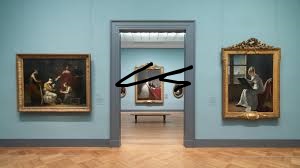We can also use art museums to follow the development of cultural values. The art of older centuries is frequently identified with traditions, social organization, and historical process, whereas the art of modernity is inclined to the issues of individuality, technology, and globalization. Placing such works side by side gives visitors to museums the opportunity to compare the ways societies have changed over time. This comparison does not only help us understand more about our past but it also makes us think about where our current culture is heading. The audience goes home with a more global view knowing that society evolves but art has always been a reliable source of knowledge on human development.
An Intermediary between old Techniques and New Ideas.
The other means by which art museums relate the past to the present is in the form of techniques exhibited in the museums. The roots of artistic activity are often evident in ancient carvings, medieval stained glass, or traditional brushwork and remain influential to creators in more modern times. Visitors are in a better position to appreciate the craftsmanship that went into creating these older techniques when they view modern works alongside them. Museums remind us that innovation is frequently established on tradition and that creativity flourishes when the past and the present stimulate one another.
An Inspirational and meditative Source.
Art museums not only preserve history, but also preserve inspirations. They can indeed give visitors more than the opportunity to appreciate art, but can also give them the opportunity to reflect, imagine, and even transform. Time in their silent halls seems to slow down and people are encouraged to reflect and ponder even more about their life. Perhaps one painting, sculpture or installation is a mirror, reflecting personal emotions and unspoken ideas to many. The impact created by art within these environments tends to last a long time even after the visit to the museum, inspiring people during their studies, career, or even life.
Sparking Creative Thinking
The power of an art museum to stimulate creativity is one of the most outstanding functions of art museums. A piece of art can make an artist create a new work of art, an image can make a designer create a new form of design, and a digital installation can make a student explore new technology in new ways. Museums challenge people to get out of their usual way of thinking and get creative. This imagination does not originate in artists or those in the creative professions only–anybody, regardless of background, can discover new thinking after encountering the visual language of art.

Promoting Personal Reflection.
Museums are safe places to reflect as well. When individuals visit the galleries, being surrounded by masterpieces that portray emotions of human beings, they tend to start thinking about themselves and their own paths. A portrait can help them remember about family ties, a historical painting will help them remember about their cultural origins, or an abstract work can be used to remind them about the problems they have encountered. These relationships between museum life and art make museum visits very personal. Museums can also enable people to see themselves more clearly by encouraging this kind of reflection, thus making them see the art with their eyes open.